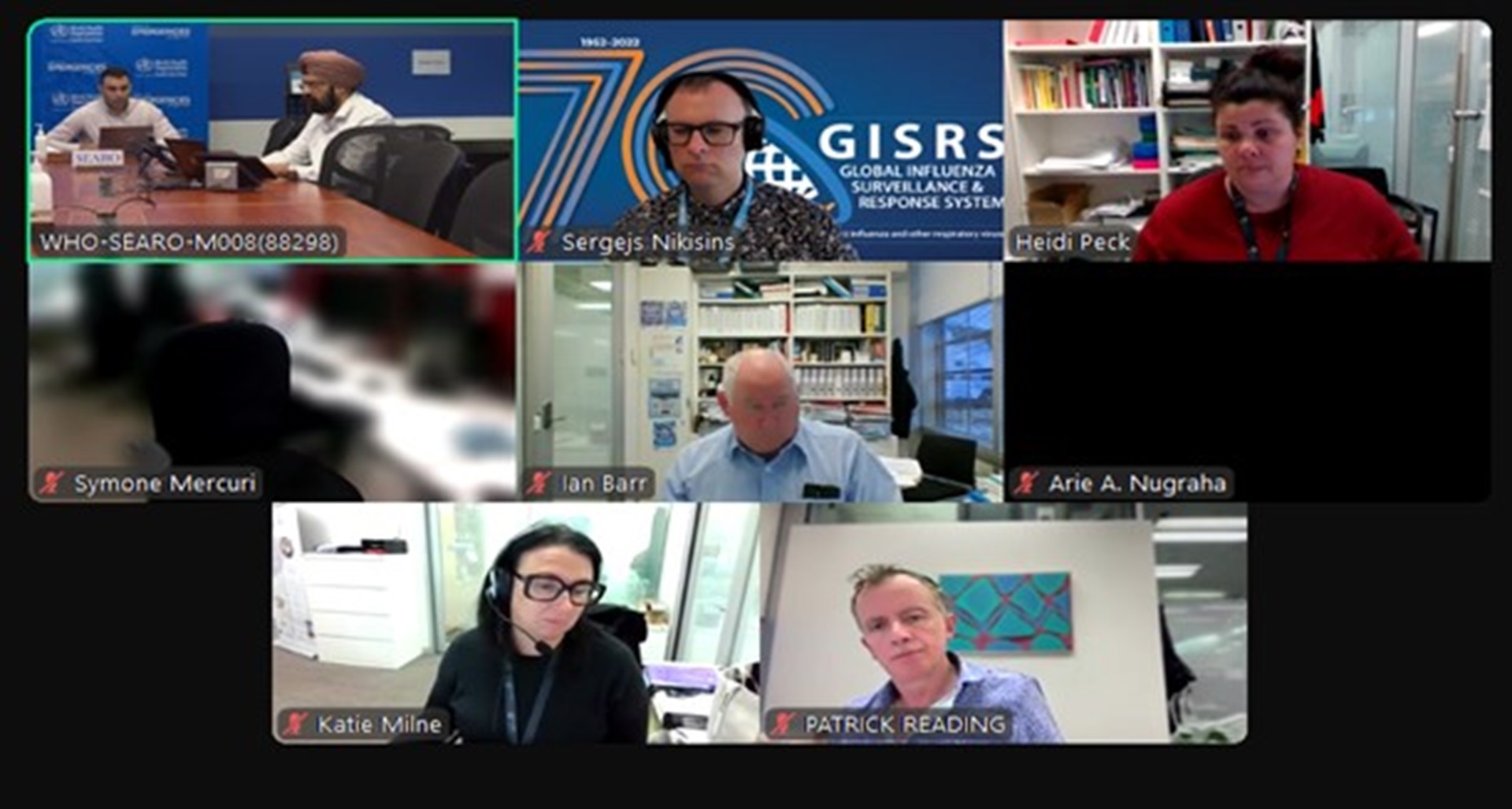On 29th April 2025, the WHO South-East Asia Regional Office organized an information session focused on specimen management for influenza surveillance. This session was organized as a follow-up to one of the key action points identified during the recent regional webinar aimed at strengthening collaboration between National Influenza Centers (NICs) in Member States (MS) in WHO’s South -East Asia Region (SEAR) and WHO Collaborating Centers (WHO CCs).
Bringing together NICs, WHO CCs, and regional partners, the session focused on enhancing the quality and reliability of the outputs of influenza surveillance conducted by MS in SEAR by promoting best practices in specimen collection, handling, and shipping. (WHO facilitates interaction among National Influenza Centres (NICs) in the South-East Asia Region, WHO Collaborating Centres (WHO CCs) for Reference and Research on Influenza, and WHO’s Global Influenza Programme through a regional webinar)
The session opened with remarks highlighting WHO SEARO’s appreciation for partners’ continued commitment to strengthening and building surveillance capacities in SEAR. Participants were reminded that every step-in specimen management, from collection to shipment, directly impacts national, Regional and global public health influencing from deciding vaccine composition to global risk assessments.
The session also acknowledged WHO’s ongoing efforts to support specimen management. This includes logistical and financial backing for virus shipment, and capacity-building programmes such as the Infectious Substances Shipping Training (ISST), designed to improve biosafety and compliance with international transport regulations.

Dr. Hideki Hasegawa Director, WHO Collaborating Centre for Reference and Research on Influenza, National Institute of Infectious Diseases, Japan Institute for Health Security, delivered an insightful presentation titled “Overview of Specimen Management in Influenza Surveillance.” He emphasized the foundational role that high-quality specimens play in achieving accurate outcomes and underscored best practices for maintaining specimen integrity throughout the surveillance pathway.
Following this, Dr. Heidi Peck, Head of Serology and Vaccine Development, and Ms. Katie Milne, Quality and Regulatory Officer, from the WHO Collaborating Centre for Reference and Research on Influenza at the Peter Doherty Institute for Infection and Immunity in Melbourne, Australia, delivered a presentation titled “Common Challenges and Gaps in specimen management Identified in SEAR National Influenza Centers (NICs).” Building on their longstanding collaboration with National Influenza Centers across the South-East Asia Region, the presenters provided a thoughtful overview of common challenges encountered in specimen management. These included opportunities for improvement in areas such as timely shipment, appropriate storage conditions, and standardised documentation practices. They also shared practical and forward-looking recommendations, aimed at further strengthening the quality, efficiency, and reliability of influenza surveillance outputs across the region.
The National Influenza Centre (NIC) team from Nepal was notably recognized during the session for sharing best practices and demonstrating commendable efforts in strengthening specimen management. Their presentation showcased practical improvements, including the successful implementation of training initiatives reflecting a strong commitment to capacity building and quality enhancement. (Shipping infectious substances safely: Nepal empowers health workforce)
This was followed by an engaging open discussion, where participants actively shared their experiences, highlighted challenges, contributing to a collaborative learning environment and deeper regional insight.
